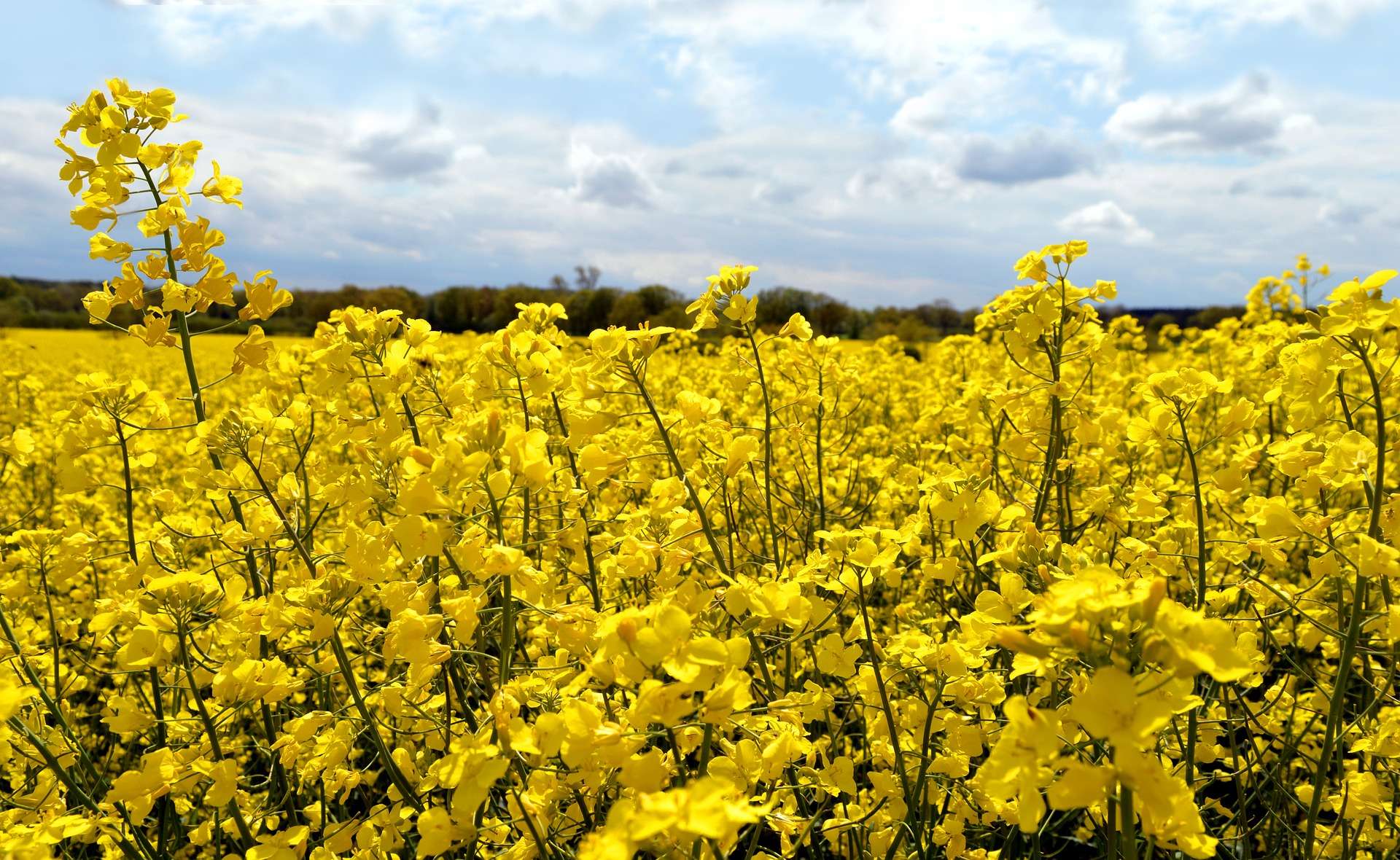At this time of year large areas of the British countryside turn yellow as a plant that many farmers include in their arable (crop) rotations comes into flower. This plant is ‘rapeseed’ or ‘oil seed rape’, which is grown for its oil rich seeds, as the name suggests.
Part of the mustard family of plants, oil seed rape is grown across Europe, Canada and Australia, as well as in the United States, China, India and Pakistan.
What is it used for?
Known as ‘canola’ in some parts of the world, especially Canada and the US, rapeseed provides a significant amount of the world’s vegetable oil, alongside other crops such as palm, soybeans and of course olives. It is high in omega 3 and is a source of vitamin K and vitamin E and so the food grade oil has become a popular cooking alternative on the shelves.
Not all rapeseed is suitable for cooking however, as some varieties are high in ‘erucic acid’ which is damaging to animals. Food grade varieties of rapeseed have been developed however to ensure that the oil is suitable for human consumption.
The plant is also used for making biofuels and animal feed (once the oil has been pressed, the leftovers are a rich food source) and it helps in the manufacture of some industrial products and biolubricants.
Where are the seeds?
The seeds develop in long green pods that turn brown when they are ripe. These are then harvested in the summer and crushed to make the oil.

Why do farmers grow oil seed rape?
Farmers grow oil seed rape as part of a ‘rotation’, which means that they rarely grow the same crop in the same field every year. It is known therefore as a ‘break crop’ as the field takes a break from being used to grow cereals such as wheat. This helps to prevent pests and diseases from building up and being carried from one crop to another. Depending on global demand it can also be a profitable crops for farmers to grow.
Rapeseed will cover the soil over the winter and therefore prevent soil erosion and suppress weeds from growing.
Next time you see a field of oil seed rape, you’ll be able to think about all the many uses of this plant, as well as brightening the countryside in late Spring.

